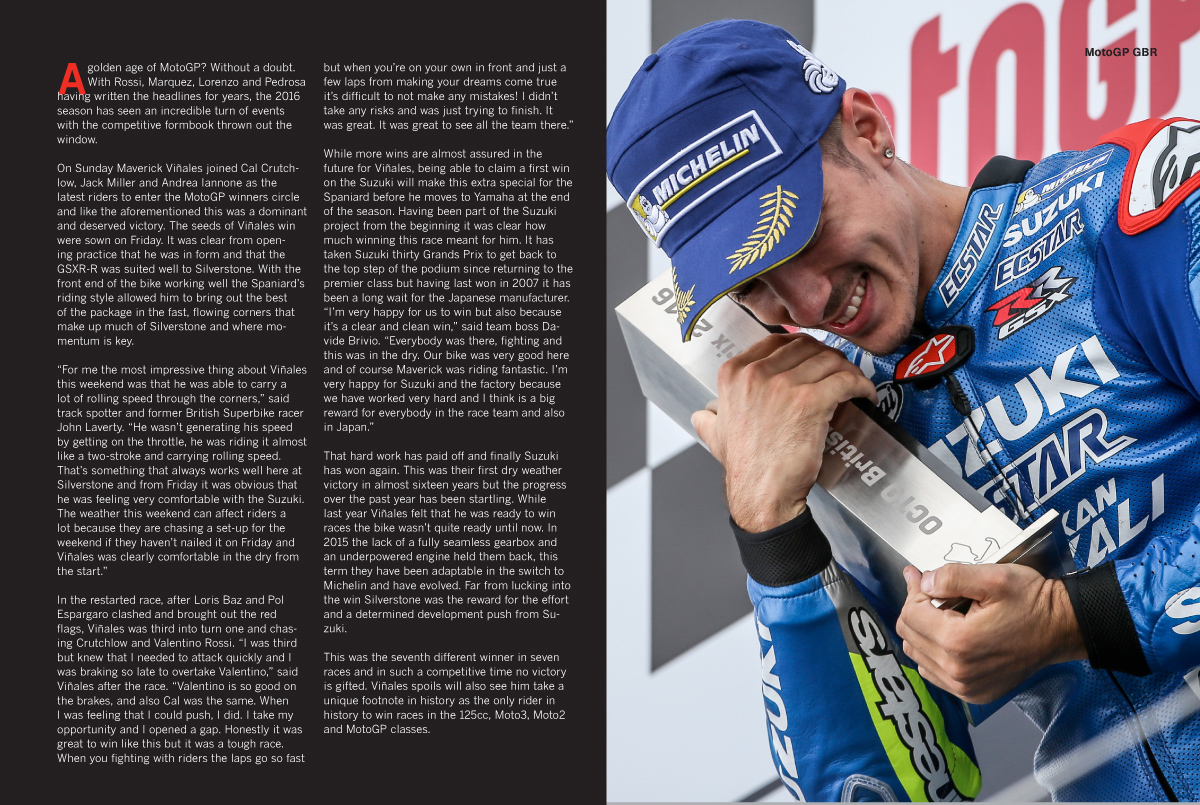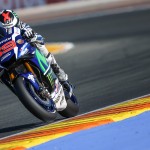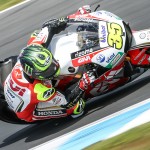What makes a MotoGP Alien? If such a thing exists – and my good friend Stephen English likes to argue that they no longer do – then there are a few milestones a rider needs to pass to qualify. First and foremost, race wins in every class they enter, starting in 125s or Moto3, through the intermediate class of 250s or Moto2, through to the premier class. They should have a championship in at least one of the junior classes, and preferably in both. They should start winning quickly when they move up a class. And they should win a MotoGP race in their first season.
Does Maverick Viñales qualify as a MotoGP Alien? He impressed in 125s and Moto3, winning just four races into his rookie 125 term, then taking five races on the grossly underpowered but sweet handling FTR Honda in Moto3. He won a Moto3 title after switching to the KTM, and coming under the tutelage of Aki Ajo, the strict Finnish team manager with a reputation for bringing discipline to unruly talents…and ensuring they succeed. He won his second Moto2 race, and finished his rookie Moto2 season in third place behind Tito Rabat and Mika Kallio.
But he did not win in his first season in MotoGP. He did not even get on the podium. Viñales’ best result in his first year in MotoGP was sixth place, once at his home round in Barcelona, and once at Phillip Island. His best qualifying was a front row start in Barcelona, where he started from second on the grid. It took him 23 appearances to get on the podium and 30 races to get his first win. Technically, he is lagging way behind schedule for Alien status.
Does that negate his claim to be an Alien? It is fair to point out that 2015 was not just Maverick Viñales’ first year in the class, it was also Suzuki’s first year back after a four-year absence. Last year, the bike was simply not matching the pace of the Hondas, the Yamahas, or even the Ducatis. It lacked a seamless gearbox, unlike all its competitors. It was using Suzuki’s own software on the spec ECU, which was up against the exceptionally sophisticated software used by Honda and Yamaha.
This time, Suzuki have radically closed the gap to the other manufacturers. The GSX-RR is now just a handful of horsepower down on the Yamaha, and a little more on the Ducati and Honda. They have the fully seamless gearbox – working for both up and downshifts – which is just as efficient as those of the factories that have been in the series for longer. The chassis hasn’t been radically altered but it didn’t need much: it is probably the sweetest handling machine on the MotoGP grid.
The unified software (as the spec software package is known) has gone a long way towards levelling the playing field. The first test with the unified software at Valencia exposed the difference between the proprietary software the factories had been running. After that two-day test, the Yamaha riders were talking about a step back of five or six years, while the Honda teams were struggling just to try to understand where to begin. Ducati made solid progress, having already switched to the more sophisticated iteration of the Open class software. While the Suzuki riders hailed the common software as a big step forward, much better than Suzuki’s own software, which they had been using up until then.

The switch to Michelins has also helped, introducing a wild card element into the equation. The development advantage which Honda, Yamaha, and Ducati had with the Bridgestones has been wiped away at a stroke. Everyone is back on the same page again. What’s more, the fact that Michelin are bringing tyres that work in both compounds, not just the one compound as was the case with Bridgestone, has introduced another joker into the pack.
And then there’s the weather: rain, cold, heat, all have played a prominent part in the races so far this year. The weather, combined with the new rules, have created a potent cocktail which has left more in the hands of the rider. The last seven races have been won by seven different riders. There have been four first-time winners in 2016. Four manufacturers have won races this year: Ducati for the first time since 2010; Suzuki for the first time since 2007.
So perhaps we need to consider Maverick Viñales’ application for MotoGP Alien status seriously. The things the Spanish youngster achieved in the junior classes had already marked him out as special. His performance on the FTR Honda was truly remarkable: the FTR chassis was vastly superior to the KTM, but the Honda engine was way down on horsepower to the Austrian power unit. Viñales had to massively override the bike to get it to be competitive, braking well beyond normal limits, and pushing the front at the very edge of adhesion. Taking second at Motegi was absolutely astonishing: that track is all about top speed and acceleration, even on a Moto3 bike. Viñales made up the half a second or more he was losing down the back straight purely by braking much later than anyone else, and forcing the front wheel into the corner and managing the grip.
Maverick Viñales may not have won a MotoGP race in his first season but he has mitigating circumstances. He may have been ready but the bike he came into the class with was still way off the pace. Even today, the Suzuki is not quite capable of hanging with the Hondas, Yamahas and Ducatis of this world unless conditions permit. If it’s cold, then the GSX-RR has rear grip, and can drive out of corners. If it’s warm, all the rear wheel does is spin, burning rubber rather than providing drive.
But perhaps we are missing something in our definition of a MotoGP Alien. Perhaps winning a race is not enough in and of itself. Perhaps we need to hold off until they have started to rack up regular victories. Viñales has yet to do this, and the signs are not good he will do so in 2016. Too many warm tracks are coming, which will create problems with grip for the Suzuki riders.
Perhaps we will have to wait until 2017 for a definitive answer. Next season, Viñales lines up alongside Valentino Rossi, on a bike which has already won five races this year, and finished on the podium five times when it couldn’t win. Rossi is already concerned about the Spaniard, with Viñales set to replace Jorge Lorenzo alongside him in the Movistar Yamaha team. “I’m very worried for next year with Maverick,” Rossi said at the press conference after the race at Silverstone. “But not from today. I already know his potential because today he won and a lot of people will speak about this victory but all the people that work in MotoGP already know from a long time his talent. I know from the moment that the sign for Yamaha is not easy. I cannot be relaxed.”
So far, Valentino Rossi has had a very good relationship with Maverick Viñales. That is likely to change once Rossi starts getting beaten regularly by Viñales. But first, Viñales has to prove he can do that. After Viñales wins his third or four race, then there will be on doubt about whether he is an Alien or not. He has a whiff of the Martian about him already.








